
Feel free to add tags, names, dates or anything you are looking for
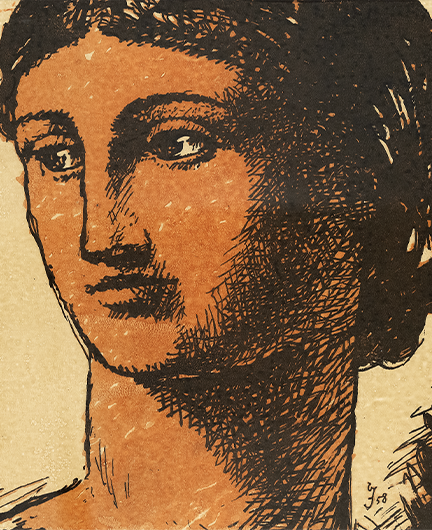
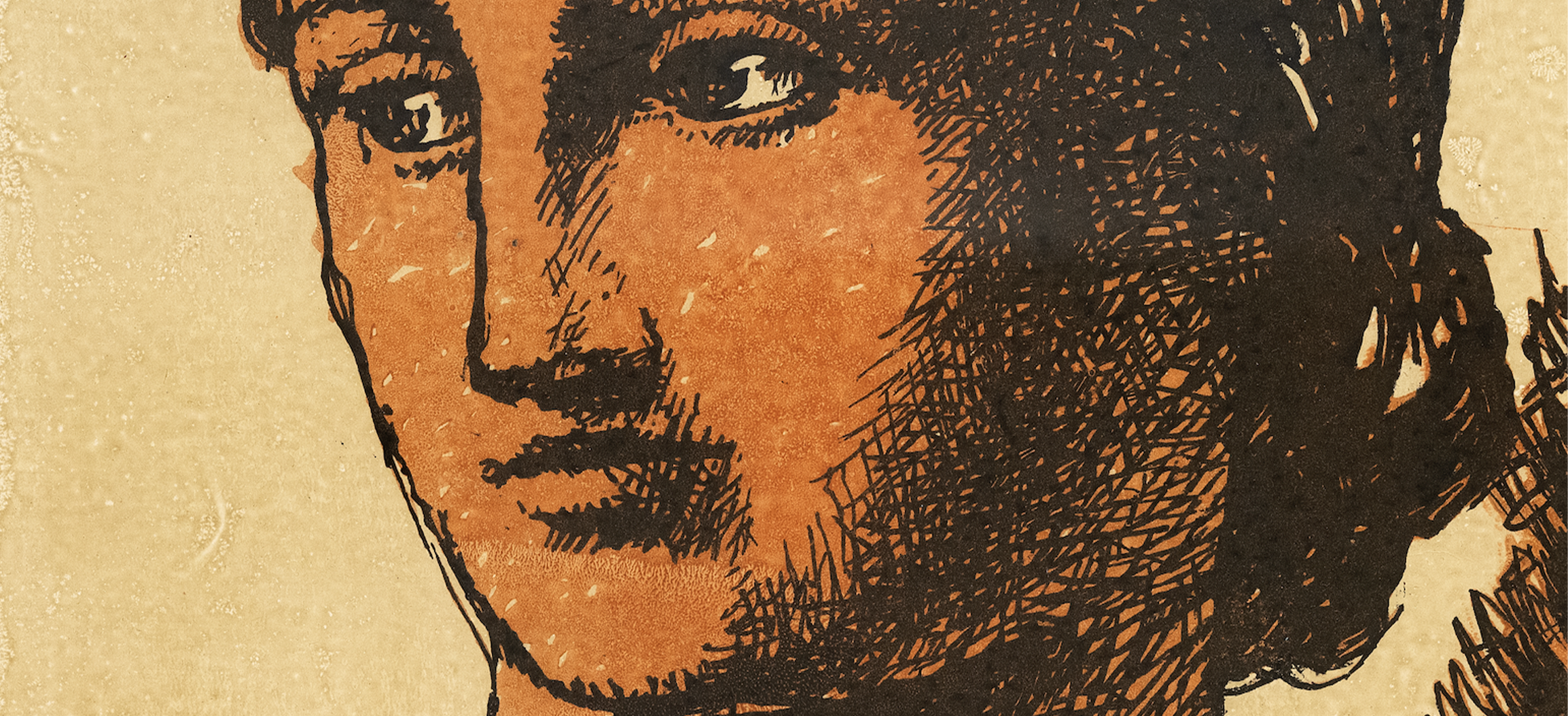
Sergo Kobuladze, People's Artist of Georgia and laureate of the Shota Rustaveli Prize, was among the first generation of graduates from the Tbilisi State Academy of Arts. His creative legacy includes painting and graphic art, as well as theatrical design and photography. His contribution to scientific and research work is also significant.
In each field he engaged in, Kobuladze stood out for his distinctive artistic identity and unique style.
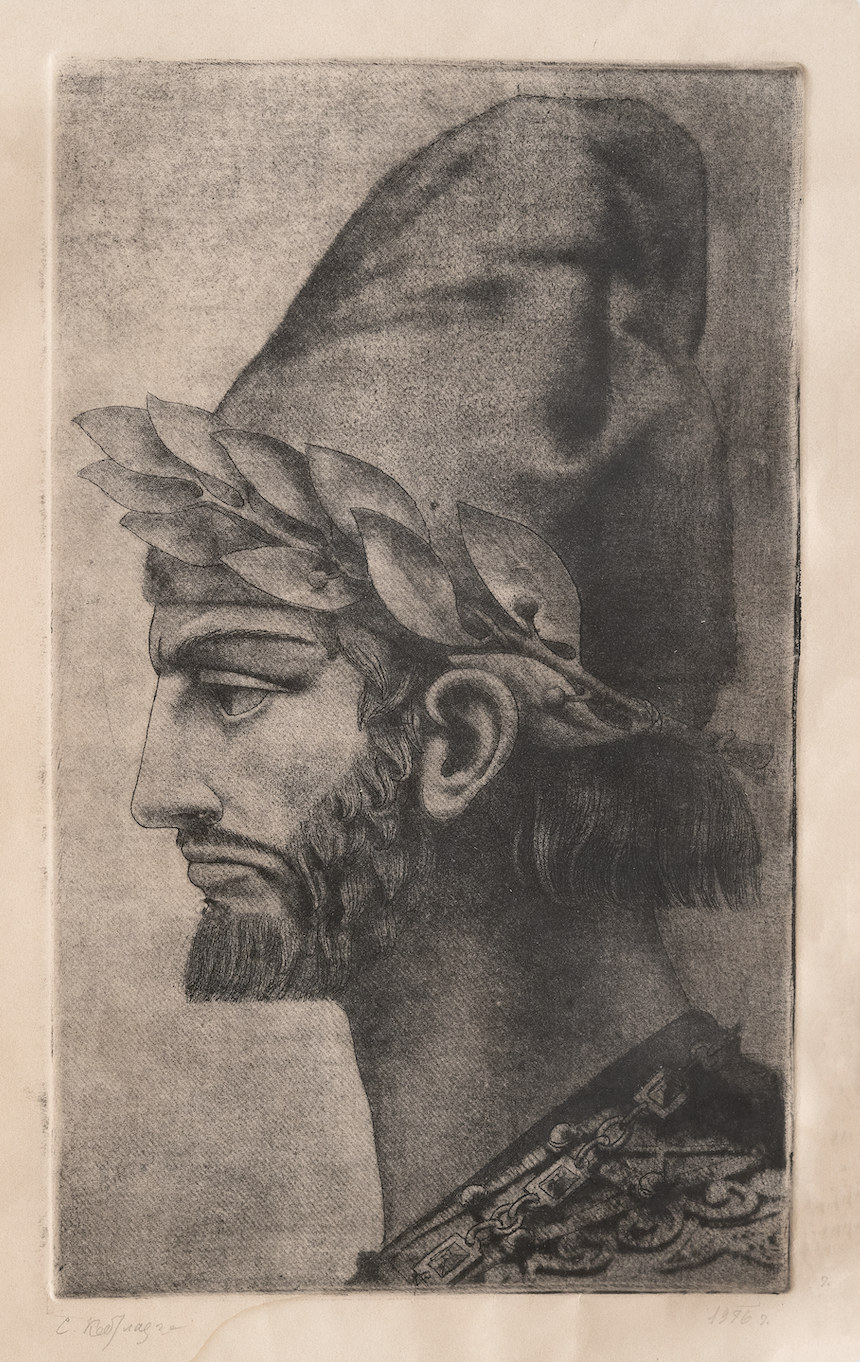
Sergo Kobuladze. Shota Rustaveli. Engraving on metal-mezzotint. 60x40cm. 1976. ATINATI Private Collection
Sergo Kobuladze was born on February 7, 1909, in the city of Akhaltsikhe, where his father, Solomon Kobuladze, served in the Military Division. From an early age, he demonstrated a remarkable talent for drawing.
After the family moved to Tbilisi, Kobuladze entered Labor School No. 43, in parallel also studying at the Nikolay Sklifosovsky Art School from 1918 to 1922, where he honed his drawing skills. In 1925, he was admitted to the Faculty of Painting at the Tbilisi State Academy of Arts, from which he graduated in 1930. There, he studied under the supervision of distinguished professors such as Iosif Charlemagne, Gigo Gabashvili, and Eugene Lanceray. On Lanceray’s recommendation, following his graduation, Kobuladze was sent to the museums of Moscow and Leningrad (now St. Petersburg) to refine his artistic technique. During this time, he was engaged in practical work, creating reproductions of masterpieces by some of the world's greatest artists, further enhancing his professional skills.
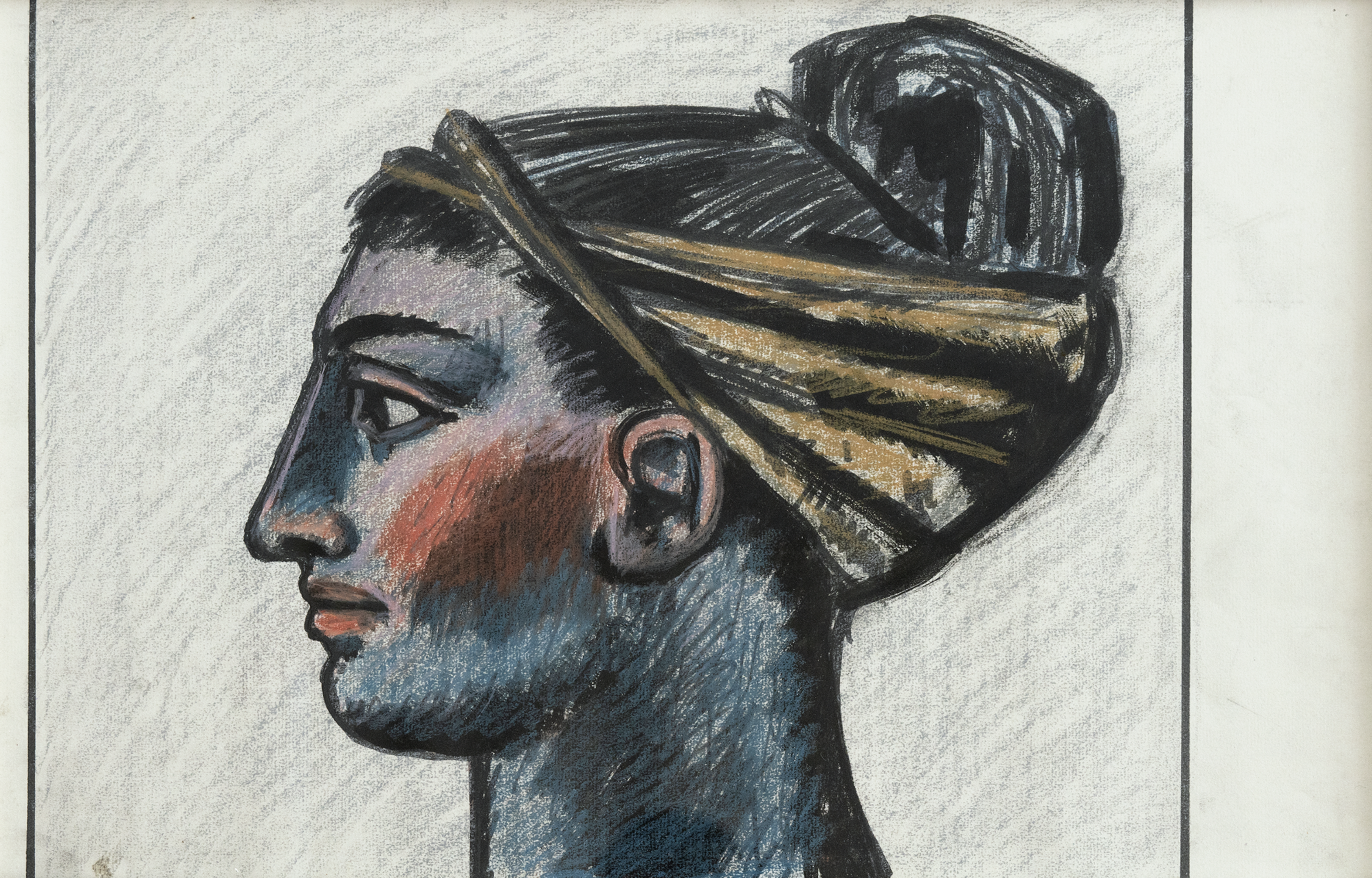
Sergo Kobuladze. Head of a Woman. Monotype. 32,5x50cm. 1960s. ATINATI Private Collection
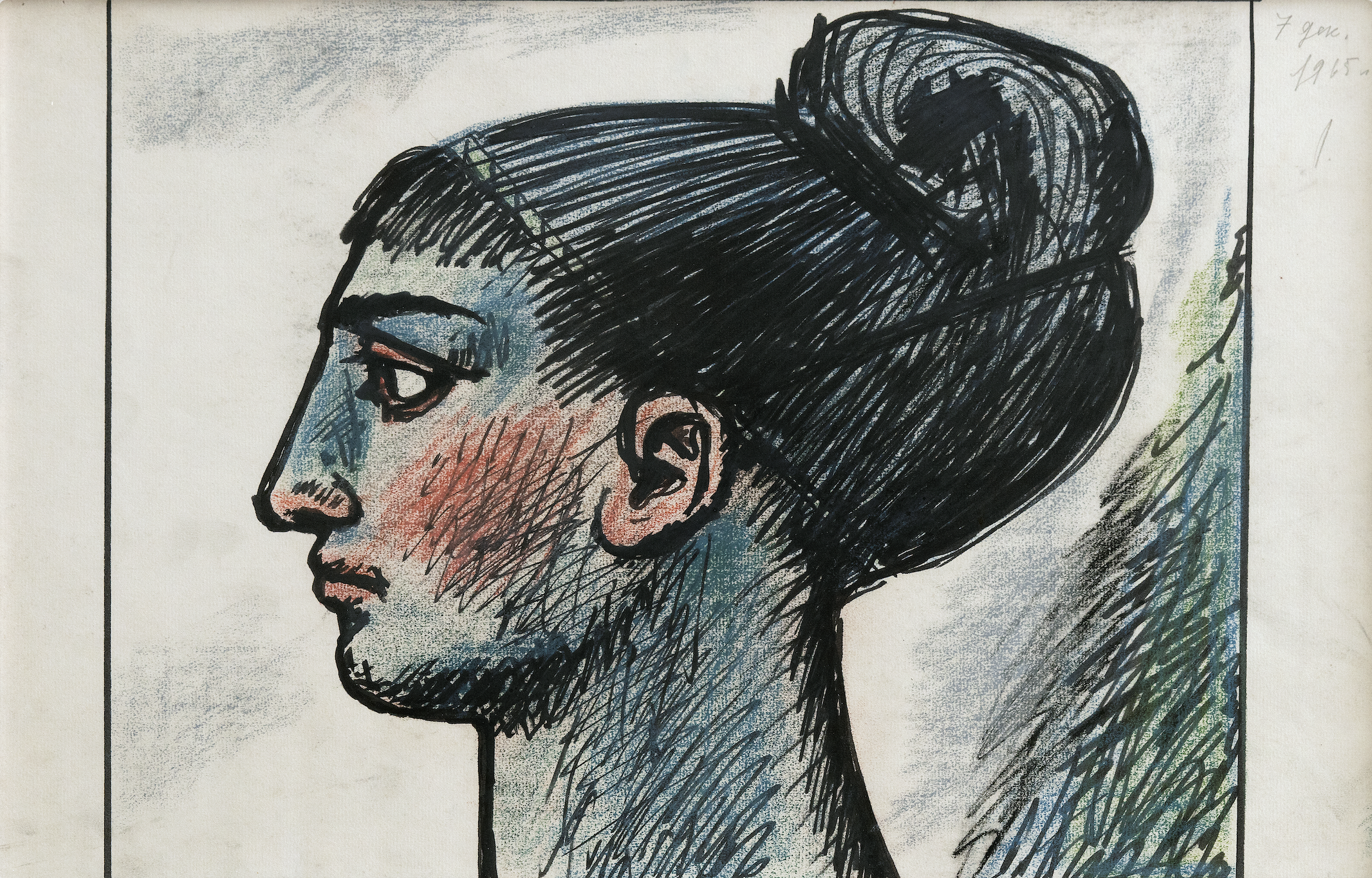
Sergo Kobuladze. Head of a Woman. Monotype. 32,5x50cm. 1965. ATINATI Private Collection
In 1938, Sergo Kobuladze was invited to teach painting at the Tbilisi State Academy of Arts. Over the years, his academic and professional advancement steadily continued: in 1945, he became head of the Department of Painting and served as acting professor; in 1948, he was appointed head of the Theater and Decorative Studio; and from 1952 to 1959, he served as Director of the Academy. Until the end of his life, Kobuladze remained devoted to nurturing new generations of artists, generously sharing his knowledge and experience with young talent.
.jpg)
Sergo Kobuladze in his studio
Sergo Kobuladze’s artistic legacy holds a distinguished place in the history of Georgian fine arts, having produced outstanding contributions that were recognized through numerous titles and awards throughout his lifetime. [1]
From the very beginning of his artistic career, Kobuladze captured the attention of both professionals and broader society alike.
In 1937, to mark the 750th anniversary of the epic poet Shota Rustaveli, the 26-year-old Sergo Kobuladze was commissioned by the Russian publishing house Detizdat[2] to illustrate The Knight in the Panther’s Skin. He completed a portrait of the poet and eleven illustrations for the poem.
To illustrate Rustaveli’s work, Kobuladze adopted a style reminiscent of Renaissance painting. With refined, emotionally resonant and elegantly restrained drawings, he was able to capture the depth and significance of key episodes from the poem.[3]
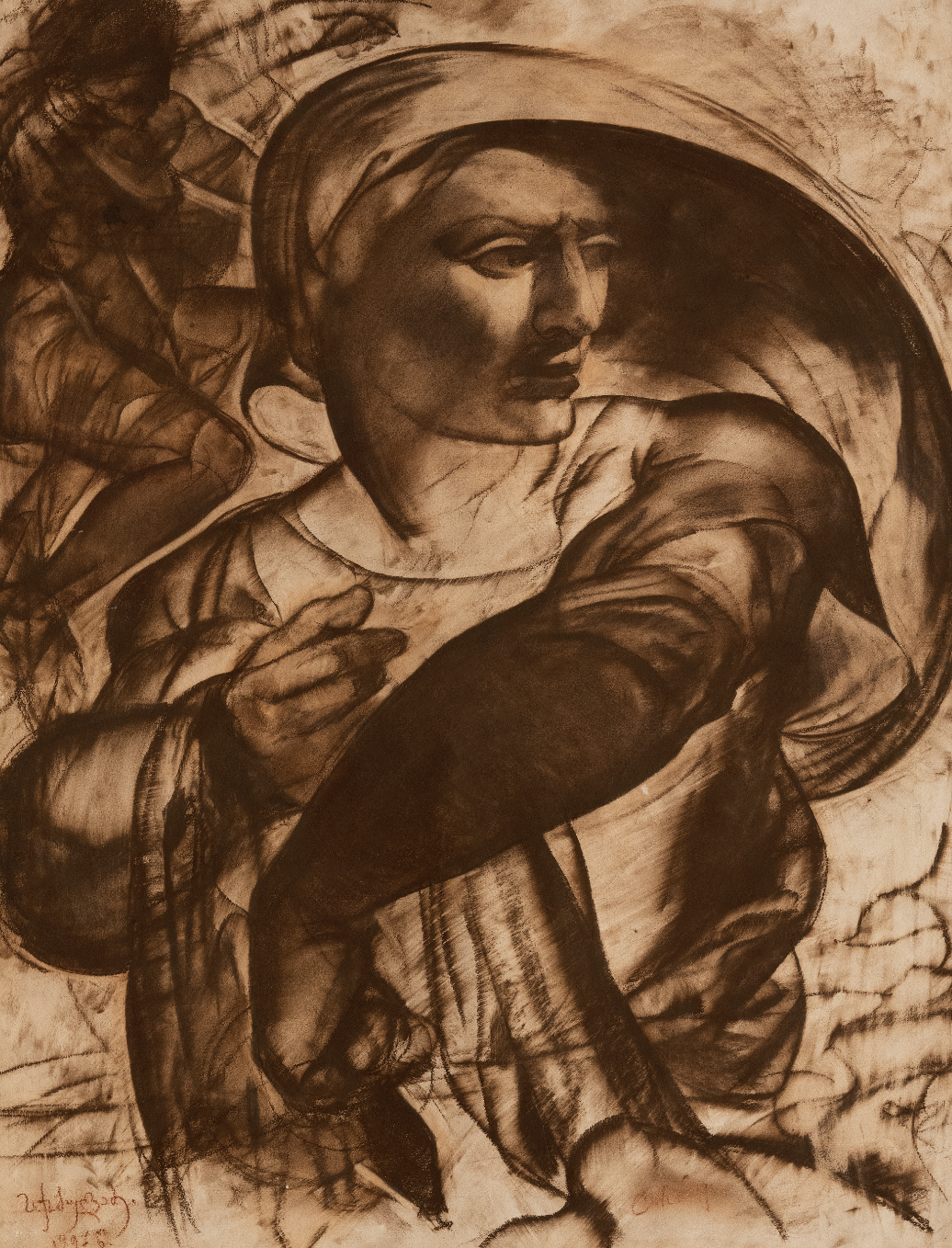
Sergo Kobuladze. Sibyl. Renaissance motif. Paper, sanguine. 64.5x49 1927. ATINATI Private Collection
In addition to The Knight in the Panther’s Skin, Sergo Kobuladze illustrated works by William Shakespeare (1934–1935; 1946), Alexander Pushkin (1951), and Shalva Dadiani (1951), as well as The Tale of Igor’s Campaign (1938–1941) and Georgian Folk Tales (1954–1955). Sergo Kobuladze’s contribution to theatrical design was particularly significant. He created numerous stage and costume sketches for plays at the Kote Marjanishvili Theater, and later designed sets and costumes for performances at the Shota Rustaveli State Drama Theater and the Tbilisi Zakharia Paliashvili Opera and Ballet Theater. He also collaborated with the Moscow Central Children's Theater and the Bolshoi Theater. In addition, Kobuladze worked with the Georgian Film Studio—most notably on Siko Dolidze’s 1938 film Enemies. Between 1945 and 1947, he created costume designs for the Georgian participants of the All-Union Physical Culture Demonstration held in Moscow.
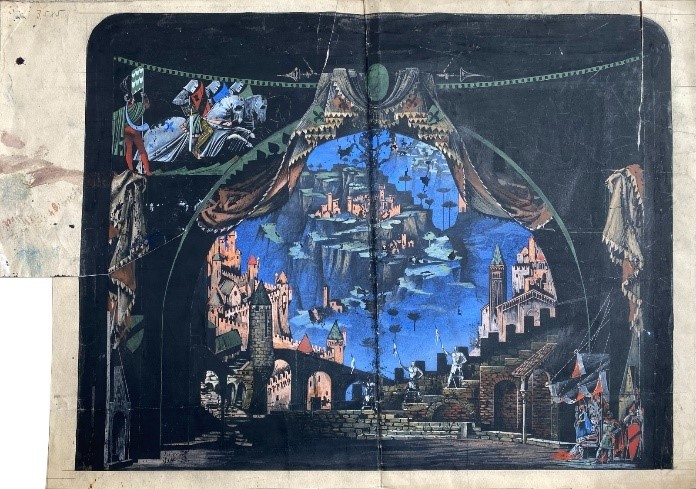
Sergo Kobuladze. Set design sketch for the ballet "Raimonda". Paper, gouache. 42x53.5 cm. 1945. ATINATI Private Collection
In Sergo Kobuladze’s creative work related to theater, special note should be made of the stage curtain he designed for the Tbilisi Opera and Ballet Theater—a piece remarkable for its exceptional uniqueness. Unfortunately, this curtain was destroyed in a fire that consumed the interior of the Opera House in 1973. The artist made continuous efforts to create a new version of the curtain until the end of his life, but was unable to do so.
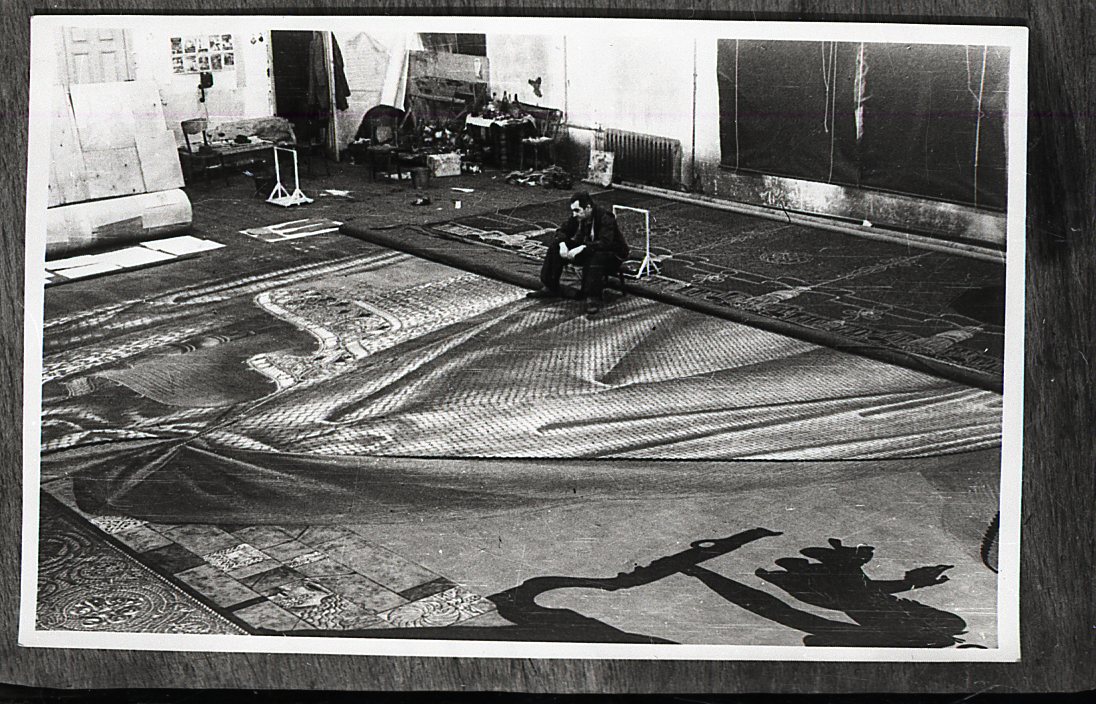
Sergo Kobuladze in the process of working on Opera and Ballet Theater staige curtain. 1959-61
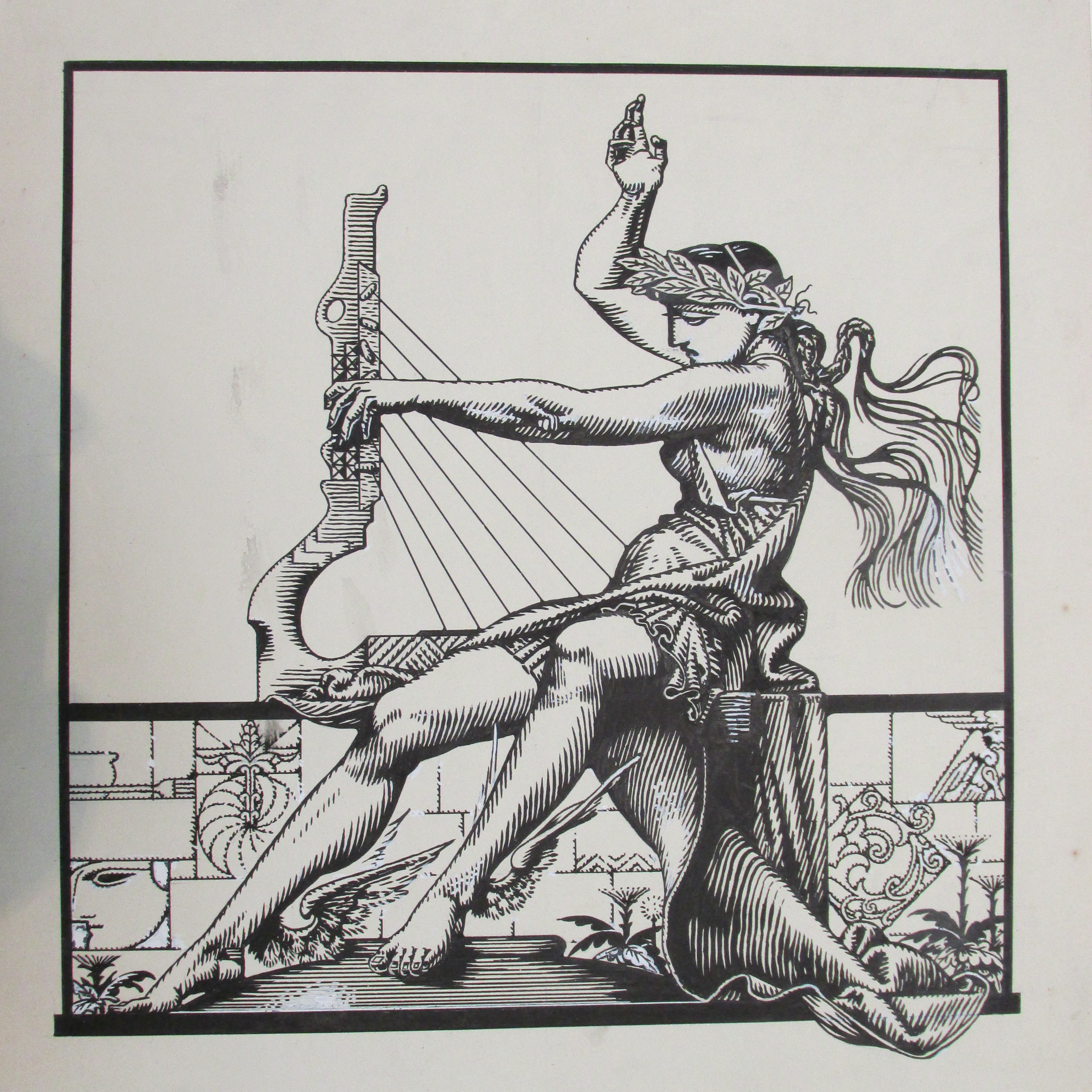
Sergo Kobulade. Sketch for Opera and Ballet Theater stage curtain. Paper, ink, pen. 31,3 x 30cm. 1959-61
Sergo Kobuladze used oil and tempera in his paintings. His work includes figurative compositions, landscapes, and still lifes. He also mastered graphic techniques with notable talent, working with pencil, watercolor, gouache, sanguine, and pastel. His watercolor landscapes are distinguished by their transparent tones and sense of airiness. Each composition reflects the artist’s exceptional artistry and creative mastery.
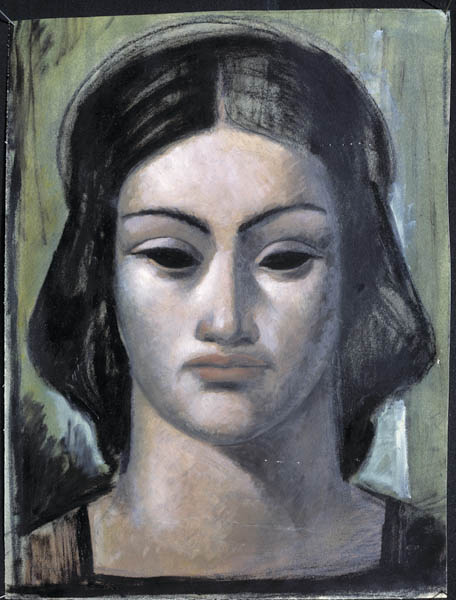
Sergo Kobuladze. Portrait. Cardboard, oil. 38,5x30cm. 1940s
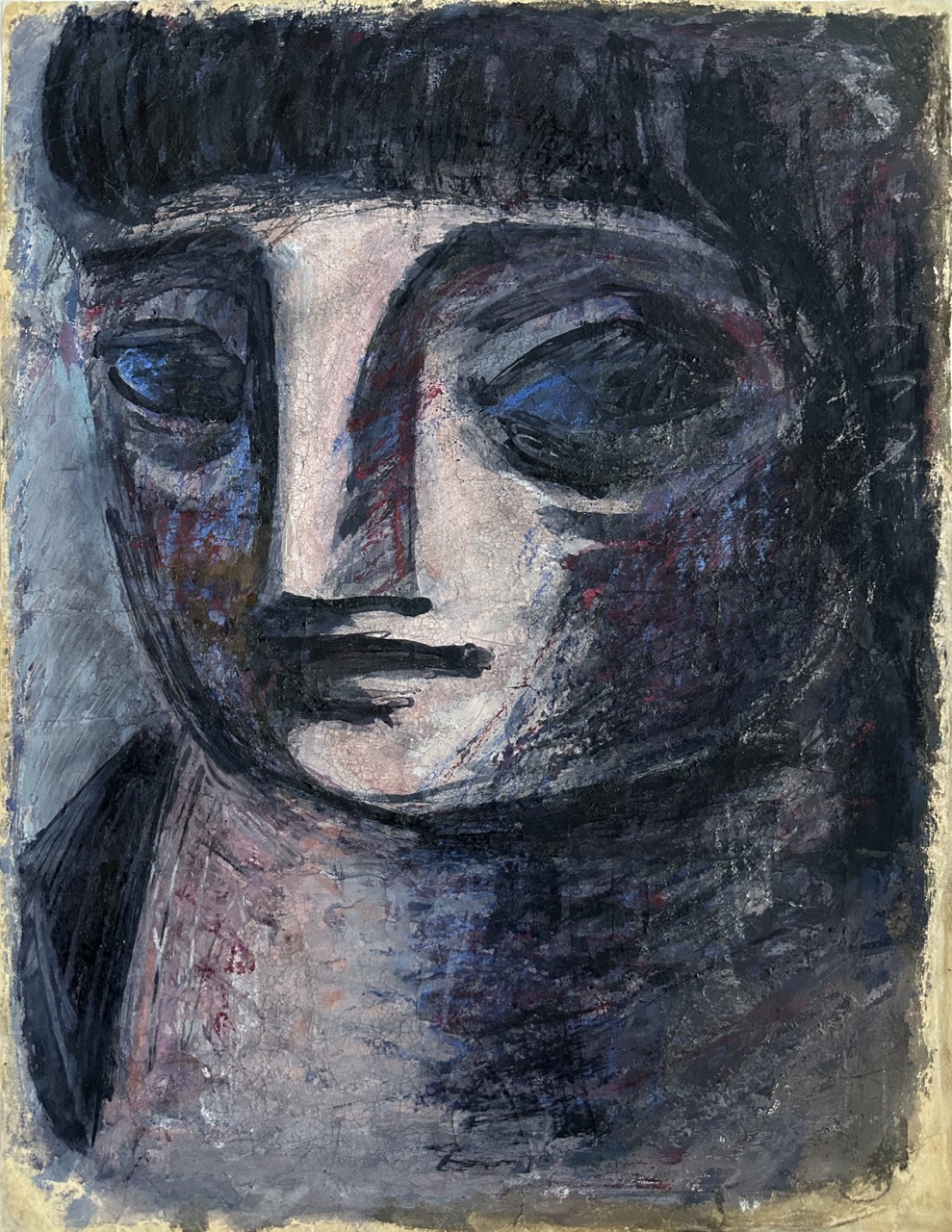
Sergo Kobuladze. Portrait of a Woman. Paper, gouache. 39x29cm. ATINATI Private Collection
To depict the human figure, Kobuladze followed a step-by-step approach—starting with the skeleton, adding layers of muscle and flesh to construct the full body, and finally adorning the figure with clothing. The volume is particularly noticeable, the dense forms of the figure conveyed with amazing skill; with bold, strong strokes made in pastel—free, and skillfully drawn. In addition to the refined forms, his works stand out for their vivid and expressive color palette.
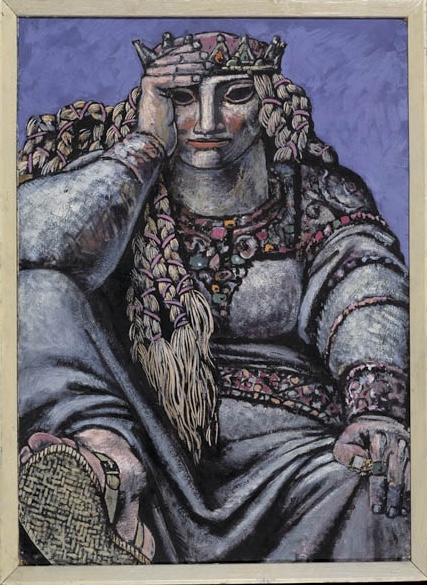
Sergo Kobuladze. Kriemhild. Cardboard, tempera. 70x52. 1969
His landscapes, meanwhile, are painted in oil. Viewed from a distance, they, with scattered shrubbery and the evocative glow of the setting sun, momentarily draw us in to the enchanting atmosphere so characteristic of the Georgian landscape. When, during our travels, we encounter such scenery, we are able to see it as Kobuladze did—with the distinct sense that we have already been there, and that this native environment is deeply familiar to us.
In addition to his immense contribution to the fine arts, Sergo Kobuladze's scientific research into the proportional system of the golden ratio deserves special attention. Based on these studies, he closely examined the proportional structure of Georgian architectural and pictorial monuments—in particular, the frescos of Ateni Sioni and the architectural layout of the Jvari Monastery in Mtskheta.
Unfortunately, no written theoretical work with explanations on Jvari Monastery has been discovered to date. What remains are only his drawings, annotated with formulas and dimensions that indicate proportional relationships.
Sergo Kobuladze’s contribution to photographic art is also of great significance. His personal archive contains numerous photographs and photo negatives taken by the artist himself, capturing a wide variety of subjects. These include portraits of family members and friends, images of Georgia’s architectural monuments, and landscapes. Particularly noteworthy are the photographs taken during his visit to the Venice Biennale in 1956, featuring scenes from Milan, Venice, Rome, and Florence. Through the artist’s discerning eye, we see carefully chosen places: cozy streets and cafés characteristic of these cities, architectural landmarks, scenes of everyday life, citizens’ clothing, advertising banners, modes of transport, and more. [4]
The study of Sergo Kobuladze’s work is ongoing, and, over time, his exceptional contribution to the development of modern Georgian fine art will continue to emerge with even greater clarity.
[1] Honored Artist of the Georgian SSR (1946)
On February 24, 1946, he was awarded the For Labor Valor in the Great Patriotic War of 1941-1945 medal; in 1958, the People's Artist of Georgia; in 1969, the Order of the Red Banner of Labor; and in 1975, the Ivane Javakhishvili Medal.
[2] It was for this reason that the original illustrations by Sergo Kobuladze became part of the permanent collections of the Tretyakov Gallery and the State Museum of Oriental Art in Moscow.
[3] In 1956, Sergo Kobuladze was the only Georgian artist included in the Soviet Union’s delegation to the 28th Venice Biennale. He was represented by a single illustration—depicting the scene of Nestan Darejani's capture by the demons. The work received wide acclaim and was prominently featured in articles covering the Biennale in various magazines and newspapers.
[4] On February 7, 2025, the exhibition Italy 1956. Photographer Sergo Kobuladze was held at the Ars Georgica exhibition hall of the Giorgi Chubinashvili National Research Center for Georgian Art History and Heritage Preservation. An accompanying photo album, Italy 1956. Photographer Sergo Kobuladze, was also published. Tbilisi, 2025.